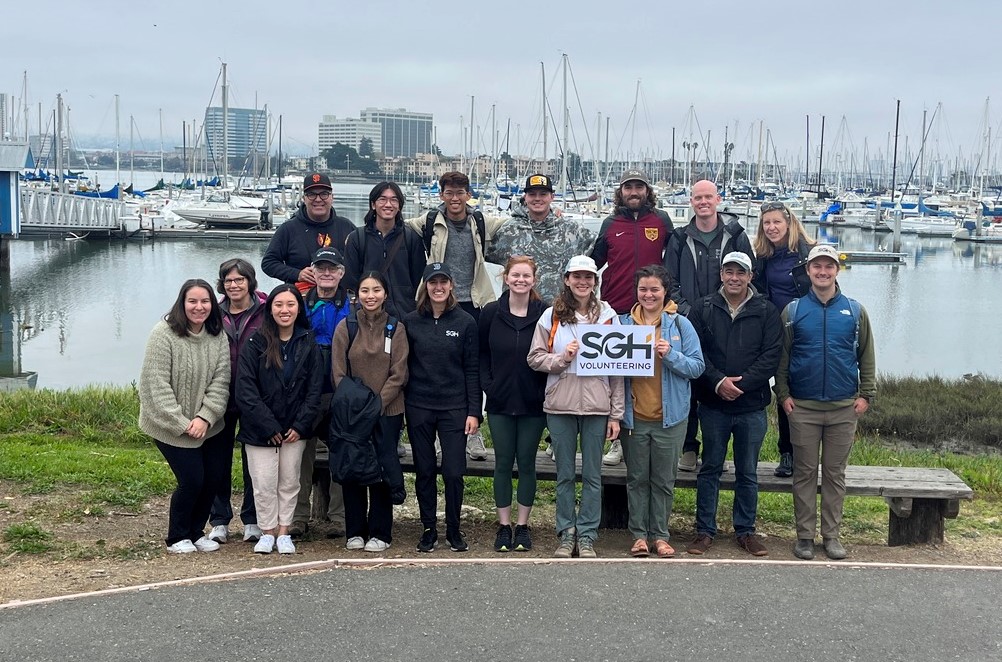Raising the Bar for Sustainability

SGH Senior Project Manager Cheryl Saldanha oversees the Environmental Stewardship pillar of our Corporate Responsibility initiative. Here, she sits down to discuss the program and its goals, as well as how she works to incorporate sustainable initiatives into SGH’s engineering practices.
What is SGH's Environmental Stewardship program?
As engineers, architects, and scientists, we have an ethical responsibility to protect the planet, the environment, and our natural resources. And of course, beyond our professional obligations, it’s just the right thing to do as humans. At SGH, we’ve incorporated sustainable practices into our professional work and business operations since the firm’s inception. However, we have not always been organized about how we share those experiences internally and externally. That’s why we created an Environmental Stewardship program as a pillar of our Corporate Responsibility program. We are acknowledging that we need to organize our efforts, hold ourselves accountable, and challenge ourselves to do better—which is really important.
What exactly does environmental stewardship mean?
We spent a lot of time trying to figure this out! There are so many terms that are interrelated, like sustainability, resilience, and conservation. We felt like the term “stewardship” nicely incorporated all of those topics and covered a wide range of the things we are already doing to achieve sustainable practices.

How does the Environmental Stewardship program align with SGH's mission overall?
At SGH, we want to be drivers of positive change. This encapsulates so much of our culture and our work, but on the environmental side, we want to challenge ourselves to be better, to be stewards of the environment, and be responsible with how we use the materials and resources that we need.
What are the program's goals?
Since we are just starting this off, our first goal was to have better communication internally and externally. I’m always hearing through the grapevine about folks in our organization who are doing amazing things with sustainability, but we don’t always share what each other is working on. I want to collect and communicate that information better within SGH, so our people can collaborate across our offices, as well as inform our colleagues throughout the industry. We want our clients and project partners to know that we have these capabilities and it’s important for them to know they can come to us. Beyond those short-term goals, I am thinking about our continued commitment to the SE 2050 embodied carbon program and how we can increase our projects that meet those standards.

The more we can learn about what is possible, the more we can develop these solutions for our clients and actually improve the landscape.
What's the SE 2050 program?
The Structural Engineering Institute (SEI) created this initiative, which SGH signed onto in 2021, as a challenge to the industry. The idea is that by the year 2050, we want be net-zero carbon neutral in our structural designs. The first piece is to collect data on our projects to have a baseline, and from there we are working on increasing the number of projects SGH completes that meet the net-zero standard. We have an action plan that lays out our commitment to advocacy, education, and reporting of projects into SEI’s database. In this way, we can push ourselves and the industry forward with new practices to achieve carbon neutrality in our work.
How did you get involved with SGH's Environmental Stewardship program?
This has always been important to me. Growing up, I would turn the thermostat in my home up or down a few degrees to save on our utility bills and orient our window blinds to increase or reduce solar gains. I was passionate about recycling and sustainability, but I wasn’t sure how I could turn that passion into a career. When I was in university studying to become a structural engineer, I learned about the area of building science, and it just clicked. I realized I could combine my work and my enthusiasm for the environment into one. I can be an engineer and solve complex problems for clients, and I can also focus on conservation and reducing energy consumption in buildings by being mindful of the materials we select and designing a durable building enclosure. Having the chance to lead SGH’s Environmental Stewardship program is a way for me to take that one step further and share these practices more widely.
How do you incorporate environmental stewardship into your project work?

Cheryl presents with fellow SGHer, Saul Accetta, at PhiusCon 2022
This is a challenging thing to accomplish, especially when new, sustainable technologies can be much more expensive than traditional methods. A roadblock I commonly run into when suggesting a more sustainable approach is that these methods go above and beyond what the code requires, which can be a hard sell to clients with a tight budget. With this in mind, I started working with the New York City Energy Code Advisory Committee. Now, I can collaborate with different stakeholders to make important changes that can have an industry-wide impact and raise the bar for projects across the board. When clients plan ahead and budget for higher-performing systems from the start of a project, the costs are not as steep as trying to shoehorn sustainable technologies into later project phases. Also, when all projects need to incorporate such technologies, the overall cost comes down—it’s economies of scale at work!
How can SGH continue to improve?
With our offices spread throughout the country, it is really important for us to stay engaged with each other and share our experiences with the wider industry. We have so much to learn from one another about emerging technologies, new project approaches, improved materials, and other components of building structures, enclosures, and technologies. The more we can learn about what is possible, the more we can develop these solutions for our clients and actually improve the landscape.